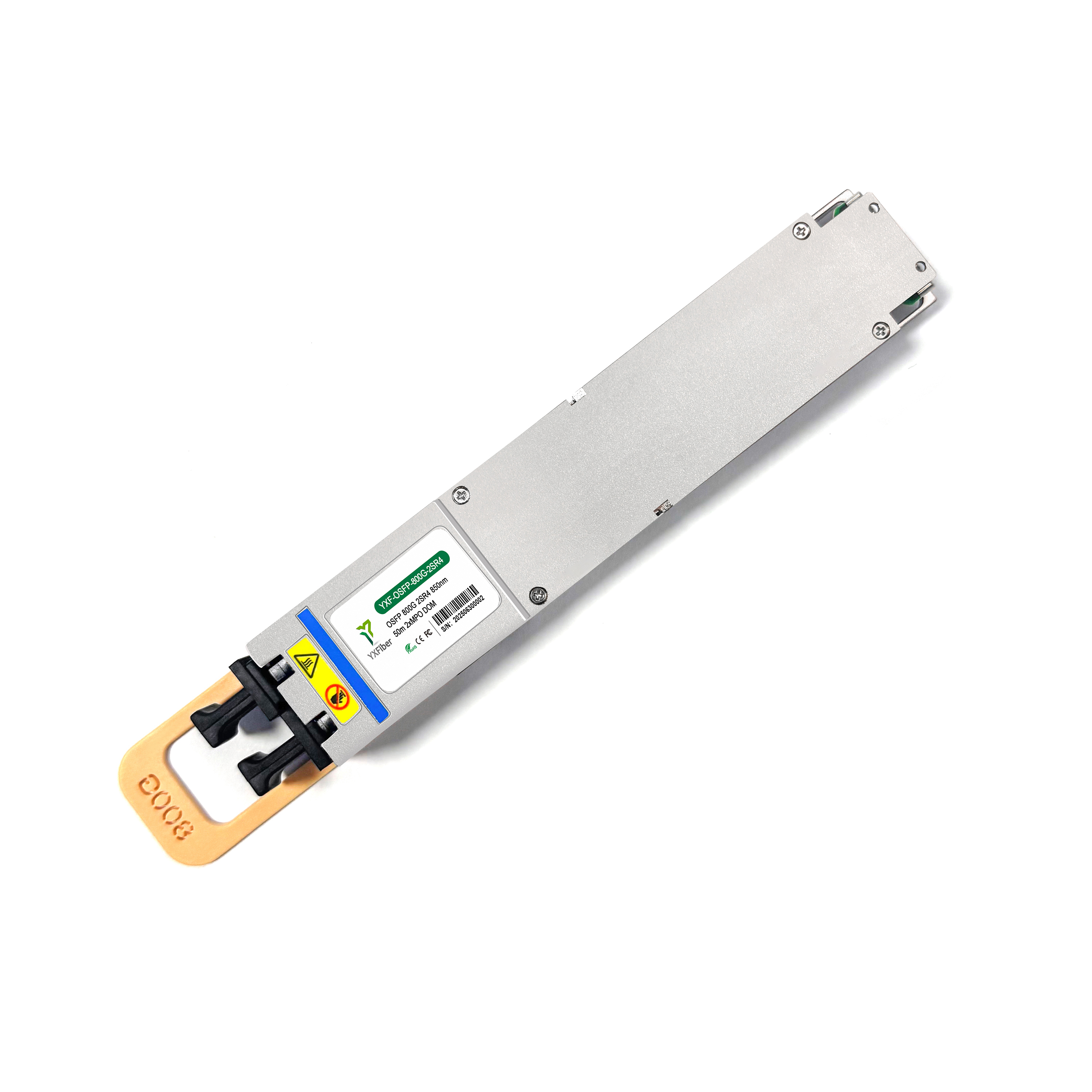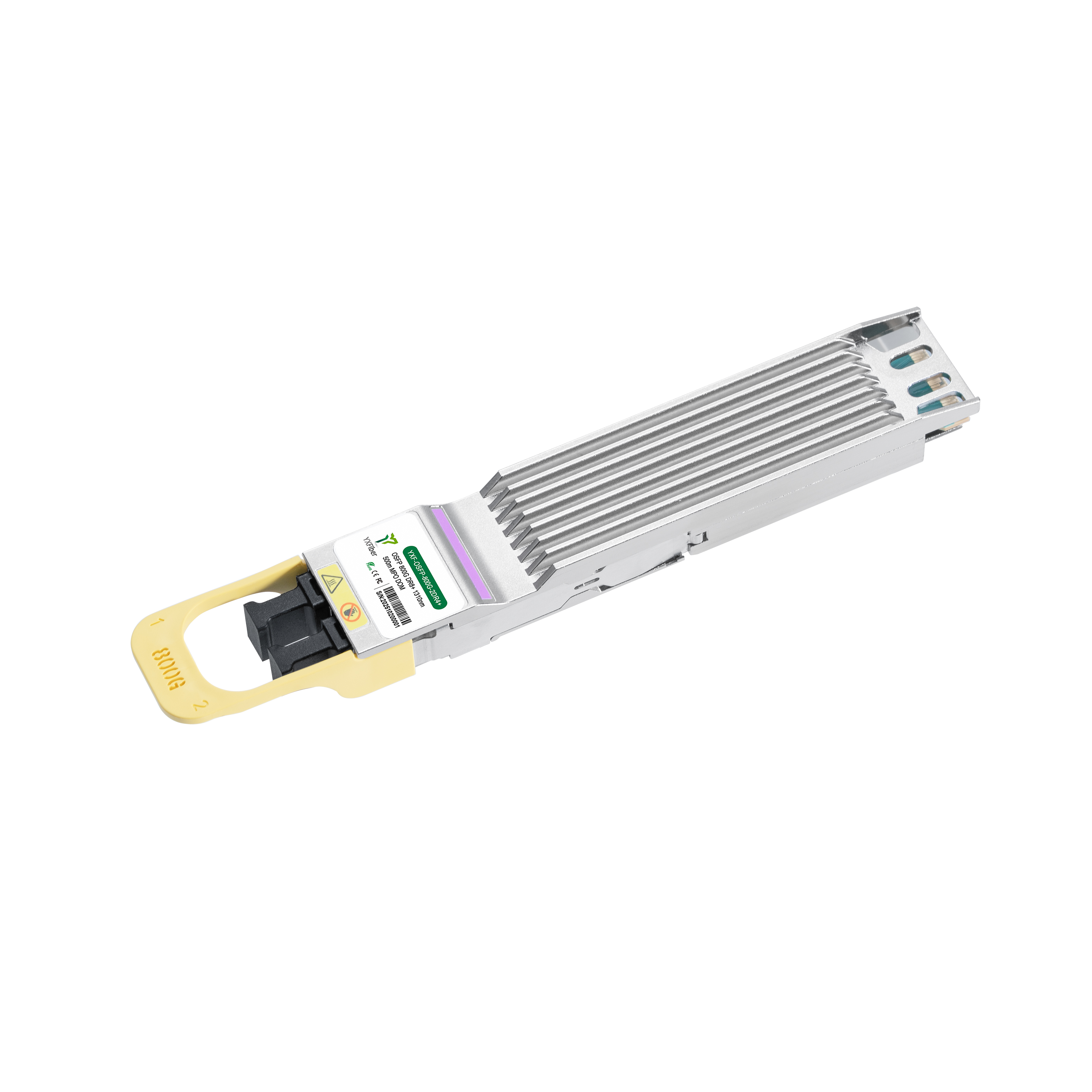- All
- Product Name
- Product Keyword
- Product Model
- Product Summary
- Product Description
- Multi Field Search
Views: 999 Author: Addams Publish Time: 2025-11-17 Origin: Site
800G OSFP optical modules are already familiar to many. With 800G optical modules widely used in data centers by the end of 2025, they have become a focal point in the optical communication industry, attracting widespread attention. For hyperscale data centers and cloud service providers, 1.6T and 3.2T optical modules are still in the laboratory stage, while commercially available 800G optical modules are currently the best choice. Their ultra-high bandwidth better meets business needs, enabling them to gain a foothold and quickly seize opportunities in the AI and big data revolution. This article will provide a basic understanding of 800G OSFP optical modules and their common application solutions.
OSFP is a package name, short for Octal Small Form Factor Pluggable. It's one of the preferred packages for 800G optical modules. As the name suggests, it has eight electrical channels, each supporting a maximum speed of 224Gbps, with a maximum support of 1.6Tbps. In 800G optical modules, each electrical channel transmits at a speed of 112Gbps.
As one of the preferred 800G high-speed packages in the optical communication industry, OSFP has unique advantages: low power consumption, hot-swappability, small size, and excellent heat dissipation, plus better compatibility with InfiniBand networks. These advantages make OSFP optical modules the preferred choice for high-performance computing networks.
800G OSFP optical modules are expensive. This high price means that only well-funded data center operators and cloud service providers are their target customers. These customers primarily use indoor short-distance transmission, meaning 800G optical modules don't need to transmit over long distances. Therefore, common 800G OSFP optical modules are only suitable for short-distance transmission.
The YXF-OSFP-800G-2SR4 is an 800G OSFP multimode short-distance module. It typically uses a VCSEL/PIN hardware solution, operates at a wavelength of 850nm, and can transmit up to 100m over OM4 fiber. The YXF-OSFP-800G-2SR4 employs an 8-channel parallel transmission scheme, featuring 8 transmit and receive channels. Currently, there are two optical interface options on the market: a 2x MPO-12/APC scheme and a 1x MPO-16/APC scheme. Both have wide application ranges. YXFiber's YXF-OSFP-800G-2SR4 uses the 2x MPO-12/APC optical interface scheme, but a 1x MPO-16/APC optical interface can be customized upon customer request.

The YXF-OSFP-800G-2DR4 is an 800G OSFP single-mode short-distance module, typically using an EML/PIN hardware scheme. It operates at a wavelength of 1310nm and can transmit up to 500m over standard single-mode fiber. Like the 2xSR4, it also employs an 8-channel parallel transmission scheme, featuring 8 transmit and receive channels. Regarding optical interface selection, there is essentially only one option: 2x MPO-12/APC. Compared to YXFiber's YXF-OSFP-800G-2SR4, the YXF-OSFP-800G-2DR4 offers a longer transmission distance and supports Breakout applications. It can be networked with 400G optical modules, and even 100G optical modules, supporting a smooth upgrade from 00G to 800G, making it a very popular product in the market.

The YXF-OSFP-800G-2FR4 is an 800G OSFP single-mode mid-range module, typically employing an EML/PIN hardware solution. It operates at a wavelength of 1310nm and can transmit up to 2km over standard single-mode fiber. Unlike the two 800G OSFP optical modules mentioned above, the YXF-OSFP-800G-2FR4 only employs an 8-channel parallel transmission scheme on the electrical signal side. On the optical signal side, it utilizes built-in wavelength division multiplexing (WDM) technology to multiplex four 100G optical signals into 400G optical signals, transmitting them using duplex LC fiber. Therefore, the optical interface uses 2x Duplex LC/UPC, with both LC interfaces transmitting at 800G speeds. The YXF-OSFP-800G-2FR4 offers long transmission distances and saves fiber optic resources, making it an ideal choice for interconnecting data centers in two locations.

The YXF-OSFP-800G-2SR4 is typically used in a direct connection within the data center, serving as a backbone link to a spine-to-spine switch or spine-leaf switch. Leveraging its 800G bandwidth, it reduces network congestion and connection latency.
![]()
In data centers, the YXF-OSFP-800G-2SR4 offers another connection method: connecting server network cards (NICs) and switches in high-performance computing networks. For cost reasons, server NICs are typically 400G. Two NICs are connected to an 800G port on the switch via the YXF-OSFP-800G-2SR4, reducing financial burden and cabling complexity.

The YXF-OSFP-800G-2DR4 can be used for interconnection between floors or buildings in a data center, connecting two cabling subnets. Leveraging its 800G bandwidth, it reduces network congestion and connection latency.
![]()
The more common use of the YXF-OSFP-800G-2DR4 is in breakout networking. It connects to the YXF-OSFP-400G-DR4 or YXF-Q28-100G-DR1 via MPO branch optical cables or MPO patch panels, enabling a smooth upgrade transition from 400G to 800G, or from 100G to 800G. This increases the uptime of existing equipment, reduces the capital tied up in obsolete equipment, and accelerates network transformation.

The usage of the YXF-OSFP-800G-2FR4 is simple: high-speed, long-distance connections. In practical applications, it is typically used for connections between data centers, provided the distance between the two data centers is within 2km. For distances exceeding 2km, using an optical transmission network is more suitable.
![]()
In conclusion, the launch of high-speed 800G optical modules has brought another leap forward in data center speeds, and has also made more network products more affordable. However, the data center's thirst for speed is endless. We believe that, driven by the market, even faster modules, such as 1.6T and 3.2T, will become available sooner, bringing further innovation to network speeds and enabling more network applications. YXFiber, a professional optical module manufacturer and supplier, will witness the arrival of a new era of networks together with you.